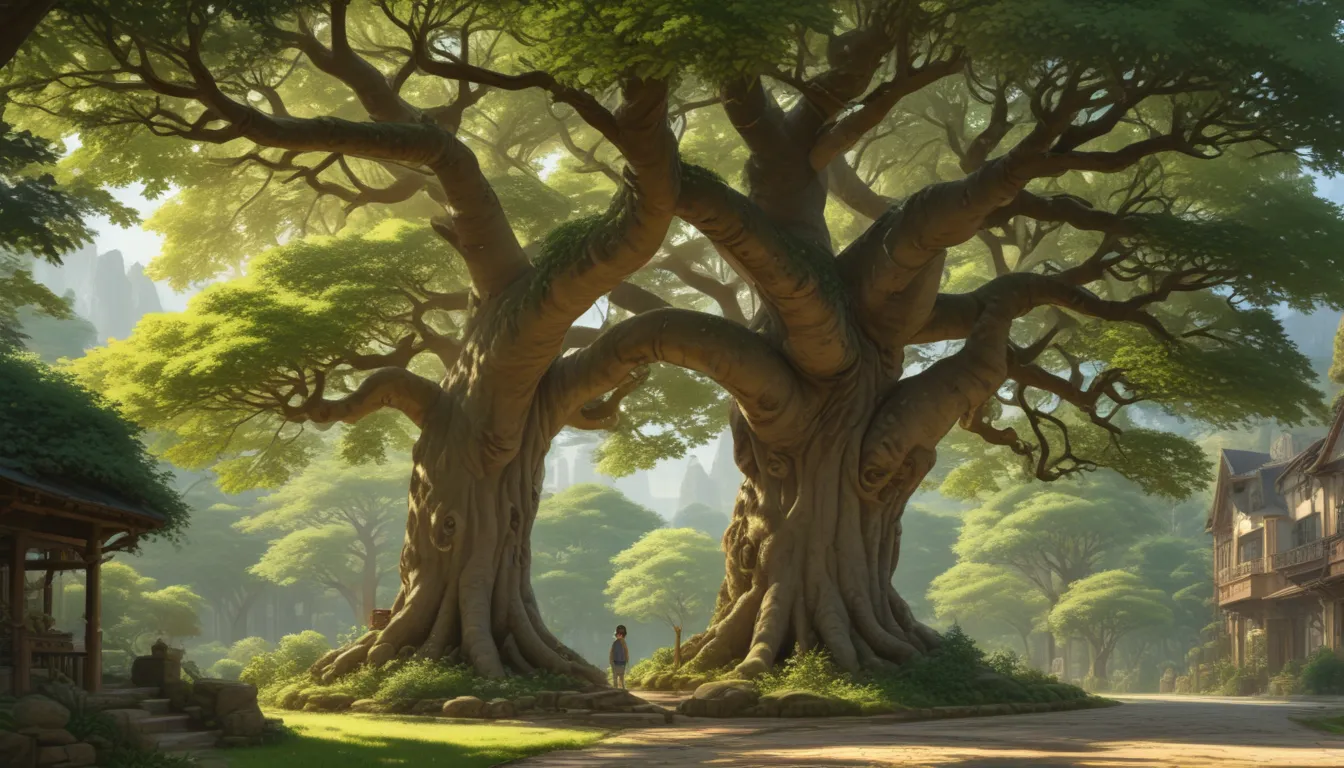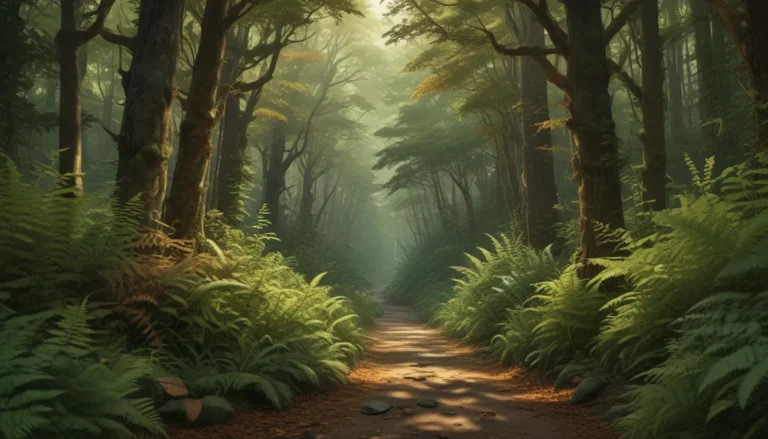Growing and Caring for Elm Trees: A Comprehensive Guide

Elm trees, also known as Ulmus spp., are striking and hardy plants that can add beauty and resilience to any landscape. Their iconic features make them stand out as symbols of strength and fortitude. If you’ve ever admired the majestic elms in parks or public spaces, you may be wondering how to cultivate and care for these remarkable trees in your own yard.
In this in-depth guide, we will explore everything you need to know about growing and maintaining elm trees. From propagation and cultivation to pest management and the best uses for elms, we’ll cover it all. So, if you’re ready to add a touch of elegance and longevity to your outdoor space, keep reading for expert tips and tricks on growing these magnificent specimens.
What Is an Elm Tree?
Elm trees are deciduous or semi-deciduous trees that belong to the Ulmaceae family and the genus Ulmus. These trees are characterized by their double-toothed leaves, which turn a dull yellow in the fall. The bark of elm trees is typically dark gray with braided ridges, and their nut-like fruits are encased in winged casings.
Elm trees are found around the world and are known for their beauty, resilience, and longevity. Cultivated for centuries, elms have a rich history and are highly valued for their ornamental and practical uses. From providing shade with their large leaves to serving as sources of medicinal bark, elm trees have a wide range of benefits and applications.
Cultivation and History
Elm trees have been prized for their beauty and utility for centuries. Their large leaves provide ample shade, making them popular choices for landscaping in a variety of climates. Elms have also been used in traditional medicine, with the bark of the slippery elm variety known for its medicinal properties.
Controlled breeding programs have resulted in the development of hybrid Asian elms that are resistant to Dutch elm disease. These hybrid varieties are smaller than their American relatives but offer increased durability and disease resistance. Elm trees are also favored for their wood, which is commonly used in furniture making and other carpentry projects.
Propagation
Propagating elm trees can be done through various methods, including sowing seeds, rooting cuttings, transplanting saplings, and grafting. Seed collection and germination are straightforward processes, with elm seeds requiring minimal preparation before planting. Cuttings can be taken from healthy branches and rooted in potting soil or rooting cubes, with proper care ensuring successful propagation.
Transplanting and establishing elm trees involve planting them in well-draining soil with proper sunlight exposure. Watering and fertilizing young trees are vital for healthy growth and development. By following the right propagation methods, you can ensure the successful establishment of elm trees in your landscape.
How to Grow Elm Trees
Growing elm trees requires patience and attention to detail. Soil preparation and proper fertilization are essential for healthy tree growth. Slow-release fertilizers with balanced nutrient blends should be used to promote strong and steady growth without making the trees overly susceptible to disease.
Monitoring water levels and providing consistent hydration are critical for young elm trees. Mulching around the base of the tree can help retain moisture and protect against weeds. Pruning and maintenance should be performed carefully to promote strong branch structure and prevent disease.
Growing Tips
- Keep young elm trees well-watered to prevent damage. – Plant in full sun away from structures. – Use well-draining soil with a pH of 5.8 to 8.0 for optimal growth.
Pruning and Maintenance
Proper pruning and maintenance are essential for ensuring the health and longevity of elm trees. Pruning in dormancy can help promote strong branch structure and improve overall tree health. Removing dead or damaged limbs and thinning out dense branches allow for better air circulation and canopy health.
Large pruning cuts should be made using a three-step approach to prevent bark damage and sap loss. Following proper pruning techniques helps minimize the risk of disease and injury to the tree. With diligent care and attention, elm trees can thrive and provide shade and beauty for years to come.
Species and Cultivars to Select
Selecting the right elm species or cultivar is crucial for successful growth and maintenance. Various elm varieties offer different characteristics and thrive in different climates. Consider factors such as space availability, sunlight exposure, and soil quality when choosing a variety for your landscape.
Popular elm species and cultivars include:
- American elm (U. americana) – Chinese elm (U. parvifolia) – Cedar elm (U. crassifolia) – Camperdown elm (U. glabra ‘Camperdownii’) – Slippery elm (U. rubra)
Each variety has its unique features and benefits, making it essential to research and select the right elm tree for your specific needs and environment. By choosing the appropriate species or cultivar, you can ensure the successful growth and longevity of your elm trees.
Managing Pests and Disease
Elm trees are susceptible to various pests and diseases that can affect their health and vitality. Identifying common pests and pathogens, such as beetles and fungal infections, is crucial for effective pest management. Using appropriate treatments, such as insecticides, at the right time can help prevent pest infestations and disease outbreaks.
Dutch elm disease is one of the most severe diseases that can affect elm trees, causing wilting and eventual death. Monitoring for signs of disease and implementing preventive measures are essential for protecting elm trees from infection. Proper care and maintenance, along with timely treatment, can help mitigate the impact of pests and diseases on your trees.
Best Uses for Elm Trees
Elm trees are versatile and valuable additions to any landscape. Their beauty, shade-providing capabilities, and durability make them popular choices for various applications. From landscaping and woodworking to creating windbreaks and supporting wildlife, elm trees offer a wide range of benefits in outdoor settings.
Plant Type: Deciduous and semi-deciduous trees Flower/Foliage Color: Various (inconspicuous); medium green, chartreuse (golden, yellow leaves in fall) Native to: Africa, Asia, North America, depending on species Maintenance: Moderate Hardiness (USDA Zones): 4-9, (sometimes 3, depending on species) Tolerance: Drought, pollution Bloom Time/Season: Late winter-early spring (blooms/samaras), fall (color) Soil Type: Rich, loamy Exposure: Full sun Soil pH: 5.8-8.0 Time to Maturity: 20-30 years Soil Drainage: Well-draining Spacing: 60-70 feet Companion Planting: Hosta, lily turf, periwinkle, Virginia bluebell Planting Depth: 1/4-3/4 inch (seed), slightly more shallow than root ball (transplants) Avoid Planting With: Plants that need full sun Height: 30-70 feet Uses: Shade, woodworking Spread: 30-60 feet Order: Rosales Growth Rate: 3-6 feet per year until maturity Family: Ulmaceae Water Needs: Moderate Genus: Ulmus Common Pests and Diseases: Beetles, carpenter worms, cankerworms, flea weevils, leafhoppers, sawflies, scale; black leaf spot, Botryodiplodia canker, Dutch elm disease, elm yellows, leaf scorch, root rot, wetwood Species: Americana, crassifolia, glabra, parvifolia, rubra, villosa
Growing elm trees can be a rewarding and fulfilling experience for any tree enthusiast. By following the tips and guidelines outlined in this comprehensive guide, you can ensure the successful cultivation and care of elm trees in your own outdoor space. With proper propagation, maintenance, and pest management practices, you can enjoy the beauty and longevity of elm trees for years to come. So, plant an elm tree today and watch it grow into a majestic and resilient addition to your landscape.





